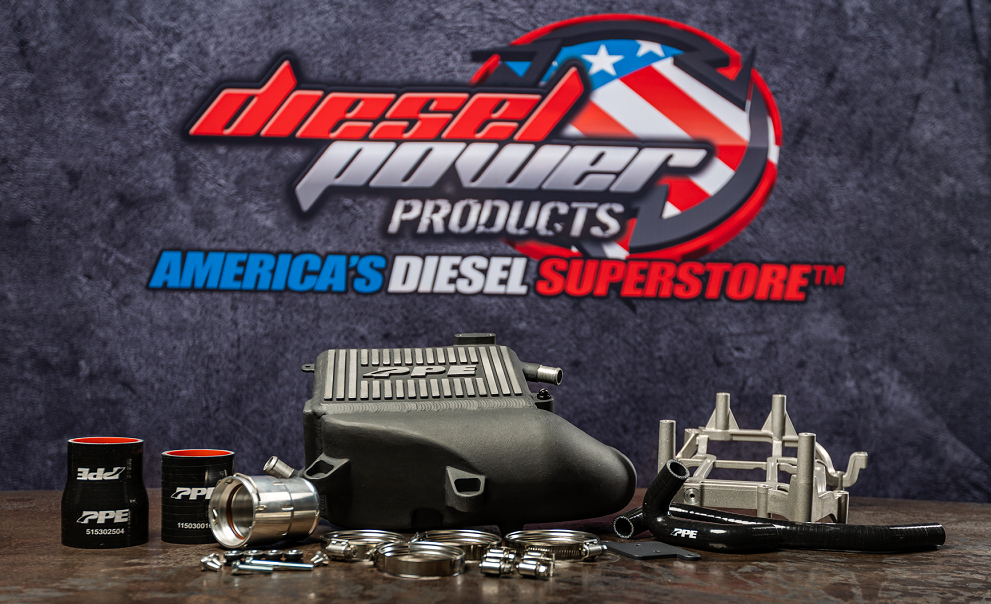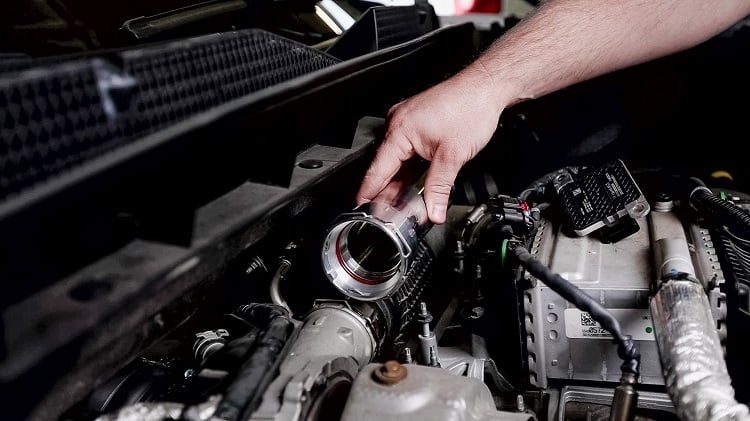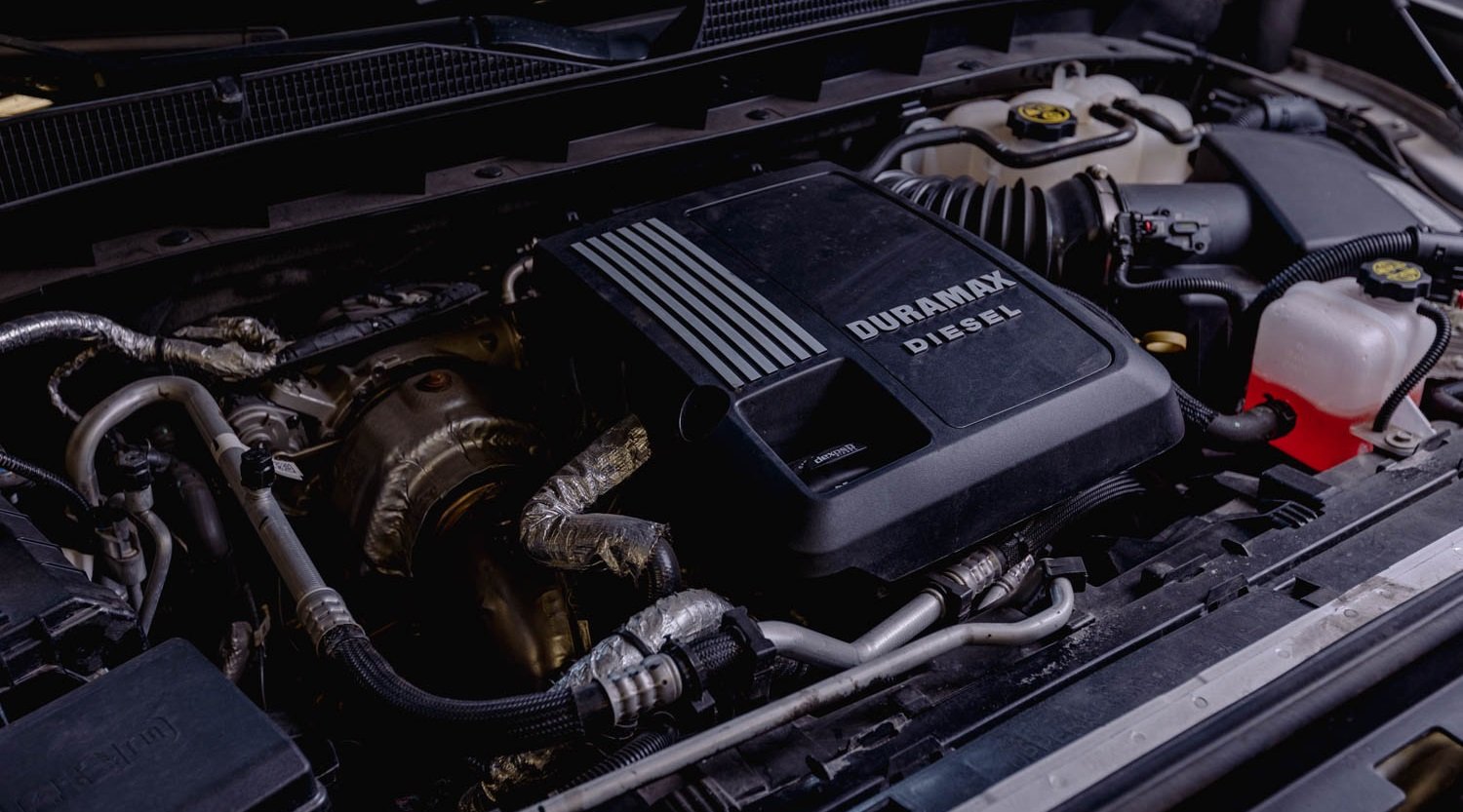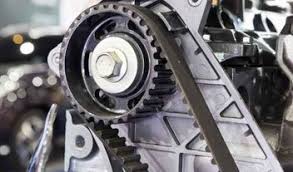Can a 3.0 Duramax diesel powered Silverado or Sierra be the ideal pickup truck for you? And what problems can you expect if you own one yourself? Diesel engines have been used in heavy duty pickup trucks for a couple decades, thanks in part to their massive torque which makes for effortless towing and hauling. On the smaller end of the spectrum, diesel engines have been used in compact cars and trucks for their incredible fuel efficiency, but one segment of the market that has (surprisingly) received very little use of a diesel engine is the half-ton pickup truck.
The few diesel powered half-tons built over the years include the Ram 1500 EcoDiesel 3.0 V6 and the Ford F-150 3.0 Powerstroke, but the newest and most exciting engine offering in the half-ton pickup class is the 3.0 inline six cylinder Duramax. While Ram and Ford both used V6 designs, GM chose to use an inline six-cylinder configuration for their three-liter offering, which pumps out an impressive 305 horsepower and 495 lb.ft. of torque for the 2023 model year. While the power number may not seem all that impressive when comparing to a 6.2 gas V8 that makes 420 horsepower, the mighty 3.0 Duramax pumps out more torque than any other ½ ton engine option, but perhaps its most impressive feat is how little fuel it will use by comparison.
3.0 Duramax is the Best of Both Worlds
While the hot-rod 6.2 gas V8 will achieve a best of around 20 MPG when cruising down the highway, the 3.0 Duramax gets an EPA estimated 23 MPG in the city, and the highway rating jumps to an astonishing 33 MPG (in the 2wd version). While this is a best-case scenario MPG number, it just points to the fact that a medium sized pickup powered by a diesel engine like the 3.0 Duramax can knock out some impressive fuel efficiency. Most owners are reporting a best of around 27 MPG in real world conditions in a 4wd truck (what most buyers will choose) which is downright impressive, but even more so is the towing capacity. When equipped with the max trailering package, a 3.0 Duramax powered ½ ton Silverado or Sierra can pull a trailer up to 13,000 pounds, and the immense amount of torque will make effortless work of that load. While 495 lb.ft. of torque may not sound like a lot compared to the larger diesel powered ¾ ton trucks of today, just consider when the LB7 Duramax was first introduced in 2001, it was only rated at 500 lb.ft. of torque, and that was from a 6.6-liter V8 diesel compared to the 3.0 liter inline six, but is the three liter Duramax enough truck for your needs?
In my opinion, a diesel powered half-ton is the perfect “goldilocks” truck that fills a void in the market. While some drivers do need the extra torque and pulling power of a 2500 or 3500 series truck, there are many owners who don’t need to pull 18,000+ pounds, and on top of that, the rough ride that comes with a diesel ¾ or 1-ton can be a bit much for the daily commute. By comparison, a compact truck will ride much smoother and get very good fuel mileage, but a Colorado or Ranger might not have enough pulling power, and that’s where a diesel powered ½ ton comes to the rescue. 27 MPG in real world conditions, enough power to pull your boat, camper, or Jeep, and a comfortable ride that you can live with every day makes the 3.0 Duramax a perfect powerplant in my opinion, but what are the downsides?
Common Problems from a 3.0 Duramax
The 3.0-liter Duramax was first found in 2019 model year trucks and SUV’s, and it was labeled with the RPO code of LM2. While the engines were found to be pretty reliable at first, there have been a few issues that have popped up with the LM2 Duramax that have frustrated owners.
One of the first issues to arise on the 3.0 Duramax was a crank no-start condition. Owners would hop in the seat and press the start button, only to hear the engine crank over and over but not fire up. As frustrating as it was having your brand-new pickup not fire up, it would rarely leave the owner stranded: simply waiting a few minutes and trying again would usually result in the engine firing up, and the problem was so intermittent it might only happen a handful of times. This problem did take GM a little while to track down because of how intermittent it would occur, it turns out the cause of the 3.0 Duramax no-start problem was in the crankshaft reluctor wheel. Apparently, the supplier who manufactured the wheel had some issues maintaining the precise dimensions required, and as a result, the crankshaft position sensor would occasionally have a hard time getting an accurate reading of where the engine was in its rotation, so the ECU would not let it fire up.
Once they figured out the cause of the problem, GM came up with an updated ECU calibration that would solve the issue, but the only drawback customers complained about was it now took a few extra revolutions of the engine before it would start, but that’s a small price to pay for a truck that always will fire up.
Oil Pump Belt Problems
While most heavy-duty diesel engines used in pickup trucks use a steel gear to turn the engine oil pump, for some reason GM decided they would instead use a rubber drive belt to send power to the oil pump on the 3.0 Duramax. It sits inside the engine so its constantly exposed to engine oil, and it’s mounted at the rear of the crankshaft. While I have seen no evidence of a belt failure yet, if one were to occur, the engine would be running with no lubrication which could be a recipe for disaster. To prevent this from happening, GM does list the oil pump drive belt as a maintenance item on the 3.0 Duramax, and it’s scheduled to be replaced at 150,000 miles. Normally a belt change like this wouldn’t be that big of a deal, but because of its location on the back of the crankshaft, the transmission must be removed from the engine to gain access so the labor costs might be a bit higher than expected, but it might take several years before the average truck even reaches 150,000.
Turbo Actuator Problems
One smaller problem that has popped up on a few 3.0 Duramax trucks has to do with the turbo actuator. In order to have a wider torque curve as well as quick throttle response, the 3.0 Duramax uses a variable geometry turbocharger which consists of two major parts: the moving vanes inside the exhaust portion of the turbocharger, and the electronic actuator that moves the vanes to the correct position.
Occasionally, if the driver notices a loss of power or throttle response accompanied with a check engine light, the VGT Actuator could be to blame, but not because the actuator has failed, rather it has come loose from its mounting position. If you have a check engine light with the codes P003A, P0046, P0299, or P0234, the first thing to do is pop the hood and locate the VGT actuator mounting bolts. They are easily accessible and right near the top of the engine, and if they are loose, you can simply tighten the bolts up and solve your problem, but just take note of how well the fastener turns, because there is a slight chance the threads may have become damaged due to the actuator vibrating. If that is the case, likely the dealer should cover the repair under warranty.
3.0 Duramax Miscellaneous Problems
Thankfully, most of the problems found with the 3.0 Duramax are more annoyances instead of a major issue that will leave you stranded on the side of the road, and one more of those small problems was discovered by people who use their truck’s block heater in cold weather. The engine block heater is designed to help warm up the engine and make for easy starts in cold weather, but it was found that if the block heater was plugged in when the ambient temperature was above 32°F (0°C), the engine cooling fan would run on its highest position and stay on constantly. If you continue to operate the vehicle, a check engine light may come on, and the fan will continue to run at full speed. Only after you shut off the truck and let it fully cool down for approximately 6 hours will the fan operation return to normal. GM has designed a new ECU calibration that is said to solve the problem, but apparently its working with mixed results.
An All New 3.0 Duramax
The first iteration of the 3.0 Duramax was used from 2019 to 2022, and for 2023, GM has released an updated version of the 3.0, this time called the LZ0 and thankfully, they have fixed most of the issues with the earlier LM2. According to sources, approximately 25% of the parts inside the LZ0 are different with major changes including steel pistons instead of aluminum, updated injectors, a better oil pump belt that will last for 200,000 miles, and they fixed the issue of the crankshaft reluctor wheel to eliminate the crank-no start condition, plus the revised calibration should cure the cooling fan running in cold weather. The fuel mileage estimates remain the same however, but the newer LZ0 is a much more reliable version of the already solid LM2.

Best Upgrades for a 3.0L Duramax
Probably the most fun part about owning a diesel truck is modifying and customizing it to suit your own personal tastes, and just like its larger ¾ ton brethren, there are plenty of upgrades available to enhance the performance, styling, strength, and looks of a 3.0 Duramax powered truck. So, once you get your new ½ ton diesel into your driveway, what are the best upgrades you should install?
Best Performance Upgrades 3.0 Duramax
One thing any engine can benefit from is colder intake air temperatures and a greater volume of air entering the engine. Cold air is denser, which means more power can be extracted from the engine in a more efficient manner, so the first upgrade you could do to get more air into your 3.0 Duramax is a turbo resonator delete from PPE. In between the turbocharger and the intercooler, GM installs a short section of pipe with a resonator to keep turbocharger and engine noise down to a minimum. The issue is the stock resonator is made from plastic, and because of its internal design to keep noise under control, it’s a bit restrictive. You can eliminate that restriction and enjoy some turbocharger sounds from your 3.0 Duramax by installing a PPE Turbo Resonator Delete Pipe. It’s constructed from aluminum which means it is much stronger than the stock plastic resonator, and it uses a Viton O-ring and a steel retaining clip for unmatched durability, and the best part is the resonator delete pipe requires no tuning for the performance gains it offers.

If you want to take things one step further and ensure that only the coolest air enters the engine, a PPE Air-To-Water Intercooler Kit has what you are looking for. It’s fabricated from aluminum and is built using a bar and plate design, and its core is 2.4 times larger than the factory intercooler. This will drastically reduce inlet air temperature, exhaust gas temperature, and is 77% less restrictive than stock which means an all-around bump in performance, and of course better fuel mileage. It comes with new silicone hoses for the coolant and an all new mounting bracket to easily install, plus its available in a variety of colors. Also available from PPE is a larger cat-back exhaust for your 3.0 Duramax. It easily installs in place of your stock exhaust system while retaining all necessary emission components, but the larger 4” exhaust diameter will reduce back pressure all the way to the engine, which will give your engine more power, better fuel economy, and improved throttle response from your already potent 3.0 Duramax.
The final upgrade every 3.0 Duramax should have under the hood is an S&B Cold Air Intake. The stock filter housing and tubes were designed with noise reduction in mind since they wanted to keep the 3.0 as quiet as possible, but this does result in restriction and loss of potential horsepower. By swapping your stock intake for an S&B Cold Air Intake you’ll once again free up additional horsepower and fuel mileage. The S&B filter will flow up to 51% more air than stock while maintaining a 99.33% efficiency rating for trapping dirt, and the best part is the S&B Intake is designed to work without any tuning changes necessary for the mass airflow sensor.
Best Suspension Upgrades for a 3.0 Duramax

Aside from performance under the hood, one more area the 3.0 Duramax powered trucks can be upgraded is in the steering and suspension. Fitting a larger set of wheels and tires is a great way to improve the looks and off-road performance of any truck, and for a smooth riding lifted suspension, the Cognito 3″ Performance Ball Joint Leveling Kit is the way to go. It replaces the stock strut with a Fox 2.0 IFP Coilover assembly, and the kit also includes some fabricated front upper control arms for a corrected ball joint angle. Out back, the Cognito kit comes with 2” lift blocks and some new Fox 2.0 shocks. With the front lifted 3” and the rear only 2” higher than stock, the factory nose-down look is corrected for a level stance, and you can now fit up to a 34” tall tire underneath your 3.0 Duramax.
Finally, to cope with the torque of your Duramax inline six, some PPE Forged Tie Rod Assemblies are a great addition to your steering system. Factory tie rods are notoriously weak on all GM IFS trucks, so to prevent anything from bending or breaking, PPE has increased the diameter of the tie rod sleeve by 32%, upsized the inner shaft by 27%, and the ball joint itself is 14% larger for the ultimate in strength and durability even with larger tires installed.
The 3.0 Duramax is the Best Choice
If you need a truck that can do just about everything, the 3.0 Duramax powered Silverado is a great choice. Its powerful, torquey, can haul a pretty big trailer, and there are plenty of aftermarket parts available if you want to increase the performance even further. Thankfully, the few problems that are known so far are relatively minor and have pretty much all been addressed with the 2023 refresh, so what are you waiting for?



2020 3.0 duramax turbo diesel.
I already have your cold air intake.
Do you have a kit for the water cooler, exhaust and pipe pipe delete.
Gm can’t find the emission fault or def fault problems.the truck is going under the lemon law.has any one else had this situation
How much horsepower will I gain with these up grades
The best information I’ve found about the 3.0 diesel, thank you so much.
Now I’m buying one!
How is this diesel perform in Tahoe & Yukon for 2023 models
I purchased a 2019 GMC Denial with the 3.0 Duramax. It ran for about 4 weeks then broke down. The truck has not run since April of 2023. Looking at fixing the truck motor for 18,000 dollars and let it go for a gasoline truck. Not sure yet.
Hi I’m trying to help my brother out he bought a brand new 2024 Silverado with the 3.0L Diesel in it and get bought some of the Hot Shots EDT to add to the fuel tank but he added 1.5 ounces to the DEF tank by accident and we want to know if that will hurt??
Everyone comes to the table with different mechanical knowledge of a truck engine selection choice. Hopefully the dealer and manufacturer will give the buyer an honest shake at the time of purchase. To do otherwise will undermine the long-term strength of the customer base and loyalty of the public to the brand. We all need trust in what we hear more than ever in our relationships with our transportation sources for a vehicle. I am a long-term GM owner.
Does doing any of the above modification’s on a new truck void warranty?
Please send the catalog of performance parts
I’ve pulled our 31ft RV weighing 6600lbs with a 5.0L F150 years 2019 to 2021. Switched to a Sierra 3.0L Duramax and the Duramax is twice the truck the Ford ever was. Highly recommend this truck for anyone on the fence on whether a Diesel is for them. Couldn’t be happier with this engine.
Will doing these void the warranty?